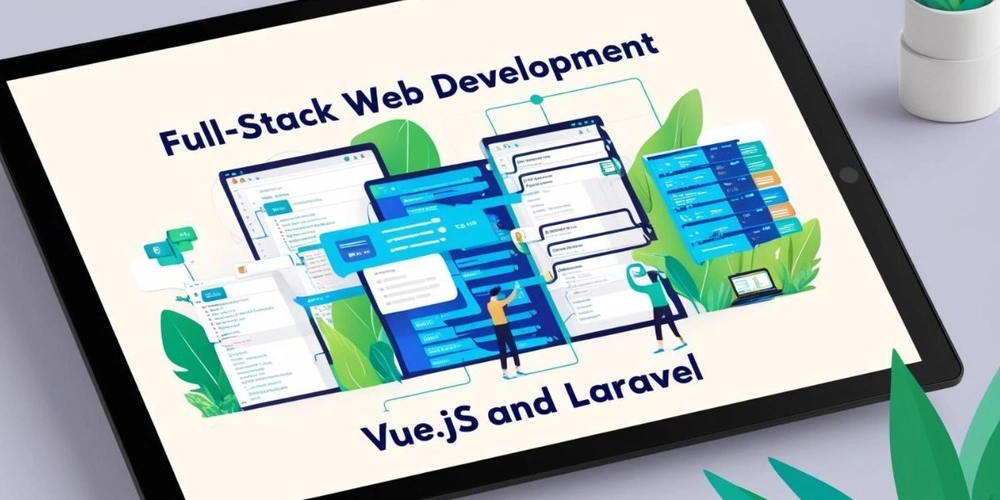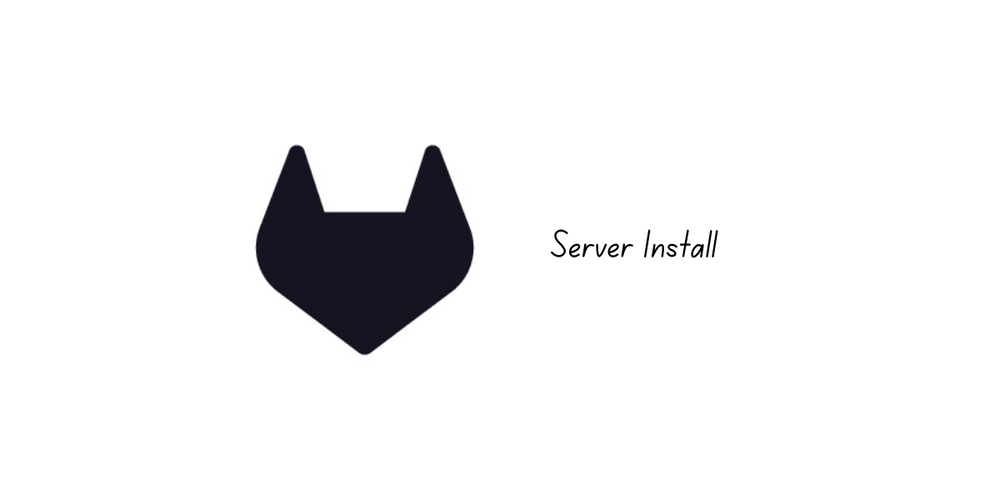Using Vue.js with Laravel for Full-Stack Web Development
Building web applications today is all about speed, interactivity, and seamless experiences. That’s where full-stack development shines. It lets you control both the front and back ends of a web application, creating more unified and efficient solutions. Instead of juggling multiple disconnected tools, full-stack development simplifies the process with a single workflow. But success in full-stack development depends heavily on the tools you choose. Enter Vue.js and Laravel — two powerful frameworks that, when used together, create a flexible and scalable development environment. Vue.js handles the frontend with ease, offering dynamic user interfaces. Laravel powers the backend with elegant syntax and built-in tools that speed up development. This combination has gained popularity for good reason. Vue.js is lightweight and reactive. Laravel is robust and secure. Together, they create a stack that is clean, modern, and efficient. According to the Stack Overflow 2023 Developer Survey, Laravel is among the most loved web frameworks, while Vue.js is a top choice for building rich, reactive interfaces. These preferences highlight the growing trend of using both technologies for full-stack development. In short, combining Vue.js with Laravel offers the best of both worlds — fast, interactive user experiences backed by a solid, secure backend. It’s a smart choice for modern web developers. What is Vue.js? Vue.js is a progressive JavaScript framework. It helps build user interfaces that are fast, flexible, and highly interactive. Designed to be adaptable, Vue works well for both simple pages and complex applications. Key Features of Vue.js Vue’s component-based structure keeps the code clean and reusable. It offers two-way data binding, making real-time updates simple. Its virtual DOM ensures smooth UI rendering. Vue also comes with built-in directives for handling events and conditional rendering. It supports single-file components, which means HTML, JavaScript, and CSS live in one place. This reduces context-switching. With official libraries for routing and state management, Vue fits well into scalable frontends. Why Developers Love It for Frontend Vue is beginner-friendly yet powerful for experts. Its learning curve is gentle, and setup is fast. Developers enjoy the simplicity of syntax and the flexibility it brings. It integrates well with other tools, so there's no need to rebuild everything from scratch. Vue’s documentation is also well-written and clear. Whether building a single-page app or enhancing a backend-rendered page, Vue offers control, speed, and a pleasant coding experience. What is Laravel? Laravel is a PHP framework that simplifies backend development. Known for its expressive syntax and developer tools, it supports rapid development with clean, maintainable code. Quick Intro to Laravel Laravel helps developers build robust web apps with less effort. It comes with built-in features like routing, authentication, and caching. The framework follows the MVC pattern, separating logic and presentation. Its Eloquent ORM makes database interactions intuitive. Laravel also supports artisan commands to speed up repetitive tasks. With Laravel, developers get structure, security, and support from a large community. Strengths for Backend Development Laravel focuses on developer productivity. It includes tools for database migrations, queuing, testing, and more. The blade templating engine offers dynamic content rendering with a simple syntax. Security is built-in, with protections against common threats like SQL injection and cross-site scripting. Laravel’s RESTful routing and middleware support make it easy to build APIs. These features make Laravel an ideal choice for scalable backend systems. Benefits of Using Vue.js with Laravel Combining Vue and Laravel brings the best of both sides—an elegant frontend and a powerful backend. This pairing leads to smoother workflows and better user experiences. Seamless Frontend-Backend Integration Vue and Laravel communicate easily through APIs. You can build a Laravel backend and connect it to a Vue interface without extra layers. Laravel serves JSON data, and Vue renders it in real-time. This setup avoids page reloads, making apps feel faster. It also keeps frontend and backend loosely coupled, which improves flexibility and maintainability. Reactive UI with Powerful Backend Vue creates a dynamic and reactive frontend. Laravel brings backend strength with tools like authentication, routing, and database management. Together, they offer a modern experience to users and developers alike. With this stack, changes made by users instantly reflect on the screen. Meanwhile, the backend ensures data integrity and secure processing. Improved Developer Experience Developers work faster with this combo. Laravel handles backend tasks with smart defaults and

Building web applications today is all about speed, interactivity, and seamless experiences. That’s where full-stack development shines. It lets you control both the front and back ends of a web application, creating more unified and efficient solutions. Instead of juggling multiple disconnected tools, full-stack development simplifies the process with a single workflow.
But success in full-stack development depends heavily on the tools you choose. Enter Vue.js and Laravel — two powerful frameworks that, when used together, create a flexible and scalable development environment. Vue.js handles the frontend with ease, offering dynamic user interfaces. Laravel powers the backend with elegant syntax and built-in tools that speed up development.
This combination has gained popularity for good reason. Vue.js is lightweight and reactive. Laravel is robust and secure. Together, they create a stack that is clean, modern, and efficient.
According to the Stack Overflow 2023 Developer Survey, Laravel is among the most loved web frameworks, while Vue.js is a top choice for building rich, reactive interfaces. These preferences highlight the growing trend of using both technologies for full-stack development.
In short, combining Vue.js with Laravel offers the best of both worlds — fast, interactive user experiences backed by a solid, secure backend. It’s a smart choice for modern web developers.
What is Vue.js?
Vue.js is a progressive JavaScript framework. It helps build user interfaces that are fast, flexible, and highly interactive. Designed to be adaptable, Vue works well for both simple pages and complex applications.
Key Features of Vue.js
Vue’s component-based structure keeps the code clean and reusable. It offers two-way data binding, making real-time updates simple. Its virtual DOM ensures smooth UI rendering. Vue also comes with built-in directives for handling events and conditional rendering. It supports single-file components, which means HTML, JavaScript, and CSS live in one place. This reduces context-switching. With official libraries for routing and state management, Vue fits well into scalable frontends.
Why Developers Love It for Frontend
Vue is beginner-friendly yet powerful for experts. Its learning curve is gentle, and setup is fast. Developers enjoy the simplicity of syntax and the flexibility it brings. It integrates well with other tools, so there's no need to rebuild everything from scratch. Vue’s documentation is also well-written and clear. Whether building a single-page app or enhancing a backend-rendered page, Vue offers control, speed, and a pleasant coding experience.
What is Laravel?
Laravel is a PHP framework that simplifies backend development. Known for its expressive syntax and developer tools, it supports rapid development with clean, maintainable code.
Quick Intro to Laravel
Laravel helps developers build robust web apps with less effort. It comes with built-in features like routing, authentication, and caching. The framework follows the MVC pattern, separating logic and presentation. Its Eloquent ORM makes database interactions intuitive. Laravel also supports artisan commands to speed up repetitive tasks. With Laravel, developers get structure, security, and support from a large community.
Strengths for Backend Development
Laravel focuses on developer productivity. It includes tools for database migrations, queuing, testing, and more. The blade templating engine offers dynamic content rendering with a simple syntax. Security is built-in, with protections against common threats like SQL injection and cross-site scripting. Laravel’s RESTful routing and middleware support make it easy to build APIs. These features make Laravel an ideal choice for scalable backend systems.
Benefits of Using Vue.js with Laravel
Combining Vue and Laravel brings the best of both sides—an elegant frontend and a powerful backend. This pairing leads to smoother workflows and better user experiences.
Seamless Frontend-Backend Integration
Vue and Laravel communicate easily through APIs. You can build a Laravel backend and connect it to a Vue interface without extra layers. Laravel serves JSON data, and Vue renders it in real-time. This setup avoids page reloads, making apps feel faster. It also keeps frontend and backend loosely coupled, which improves flexibility and maintainability.
Reactive UI with Powerful Backend
Vue creates a dynamic and reactive frontend. Laravel brings backend strength with tools like authentication, routing, and database management. Together, they offer a modern experience to users and developers alike. With this stack, changes made by users instantly reflect on the screen. Meanwhile, the backend ensures data integrity and secure processing.
Improved Developer Experience
Developers work faster with this combo. Laravel handles backend tasks with smart defaults and clean syntax. Vue speeds up frontend development with reusable components and reactive data binding. Both frameworks have strong communities and rich ecosystems. This makes problem-solving easier and learning faster. For teams, this means better collaboration and shorter development cycles.
Setting Up Vue.js with Laravel
Starting with Vue and Laravel is straightforward. Laravel provides the structure, and Vue brings the interactivity. Together, they create a productive full-stack environment.
Laravel Installation
First, install Laravel via Composer. Use the command composer create-project laravel/laravel project-name. This sets up the backend with a default folder structure. You get built-in support for routes, controllers, and views. Laravel includes a development server, so you can start coding right away. The default setup supports frontend scaffolding tools, making integration with Vue easy.
Installing Vue via Laravel Mix
Laravel Mix simplifies asset management. It uses Webpack behind the scenes. Run npm install && npm run dev after adding Vue to your project. Add Vue components inside the resources/js folder. You can use .vue files to organize your frontend code. Laravel Mix compiles them automatically. It also watches for changes and reloads the browser. This setup boosts your productivity.
Folder Structure Overview
Laravel keeps your code clean and modular. The resources folder holds your Vue components, styles, and JavaScript files. routes define how the backend responds. Controllers live in the app/Http/Controllers folder. This separation of concerns helps maintain large projects. Vue components can be grouped by feature or function. Laravel Mix compiles all assets from resources to public, making them ready for browsers.
Example Use Case: Building a Simple App
Using Vue with Laravel lets you build apps that are both interactive and scalable. Here’s how a simple app might work.
Overview of a Basic Full-Stack App
Imagine building a task manager. The frontend lets users add, edit, and remove tasks. The backend stores those tasks in a database. Users get instant updates without page reloads. Vue handles the interface. Laravel stores, fetches, and updates task data through APIs. Together, they create a smooth experience for both users and developers.
How Vue Handles the Frontend Logic
Vue handles form inputs, task lists, and real-time updates. Components control small parts of the UI—like a task card or button. Data binding keeps the interface synced with user input. Vue’s reactive system updates the DOM automatically. You can also use Vue Router for navigation. All logic stays within the browser, offering a fast and smooth experience.
Laravel Managing Backend APIs
Laravel manages task data using RESTful APIs. You create routes for storing, updating, and deleting tasks. Controllers handle incoming requests and pass data to the database using Eloquent models. Laravel also handles validation and error responses. The backend is secure and organized, making future updates easy. Laravel's API resources let you send clean JSON responses back to Vue.
Best Practices for Full-Stack Development
A good setup improves performance, security, and maintainability. Follow these tips to make the most of Vue and Laravel.
Organizing Codebase
Keep frontend and backend code separate but connected. Group Vue components by feature. Use Laravel’s controller and model folders effectively. Stick to a consistent naming convention. Break down large components into smaller ones. Keep logic out of templates. Use Vuex for global state when needed. A clean structure makes collaboration easier and reduces bugs.
API Communication Tips
Use Axios for sending HTTP requests from Vue to Laravel. Keep API routes in a separate file in Laravel. Handle errors gracefully with try-catch blocks. Include status codes and clear messages in responses. Use Laravel middleware for authentication and access control. Always validate input before saving it. Maintain clear, consistent API structure across endpoints.
Security and Performance Suggestions
Use Laravel’s built-in protections against threats like CSRF and SQL injection. Hash passwords before storing them. Limit API access with authentication tokens. Use lazy loading for Vue components to reduce load time. Cache data and compress assets. Regularly update dependencies. Test your code often. Good security and speed make your app reliable and user-friendly.
Final Thoughts
The combination of Vue.js and Laravel is a practical choice for modern full-stack development. It suits projects that demand fast, dynamic user interfaces along with a secure and scalable backend. From startups to enterprise apps, this stack adapts well to different needs.
Use this stack when building single-page applications, real-time dashboards, admin panels, or any app requiring both speed and structure. Vue handles the frontend beautifully, while Laravel provides backend power with less overhead.
For developers looking to speed up their project timelines, this duo offers a smoother workflow and fewer roadblocks. It is also backed by strong communities, extensive documentation, and regular updates.
If you're planning your next project, this is a great time to explore this combination. You can also Hire Vuejs Developers to bring added expertise and save development time.
Trying this stack can help teams build better applications faster. It’s easy to get started and even easier to scale.




























![[Webinar] AI Is Already Inside Your SaaS Stack — Learn How to Prevent the Next Silent Breach](https://blogger.googleusercontent.com/img/b/R29vZ2xl/AVvXsEiOWn65wd33dg2uO99NrtKbpYLfcepwOLidQDMls0HXKlA91k6HURluRA4WXgJRAZldEe1VReMQZyyYt1PgnoAn5JPpILsWlXIzmrBSs_TBoyPwO7hZrWouBg2-O3mdeoeSGY-l9_bsZB7vbpKjTSvG93zNytjxgTaMPqo9iq9Z5pGa05CJOs9uXpwHFT4/s1600/ai-cyber.jpg?#)














































































































































![[The AI Show Episode 144]: ChatGPT’s New Memory, Shopify CEO’s Leaked “AI First” Memo, Google Cloud Next Releases, o3 and o4-mini Coming Soon & Llama 4’s Rocky Launch](https://www.marketingaiinstitute.com/hubfs/ep%20144%20cover.png)




































































































































































































![Rogue Company Elite tier list of best characters [April 2025]](https://media.pocketgamer.com/artwork/na-33136-1657102075/rogue-company-ios-android-tier-cover.jpg?#)








































































_Andreas_Prott_Alamy.jpg?width=1280&auto=webp&quality=80&disable=upscale#)



























































































![What’s new in Android’s April 2025 Google System Updates [U: 4/18]](https://i0.wp.com/9to5google.com/wp-content/uploads/sites/4/2025/01/google-play-services-3.jpg?resize=1200%2C628&quality=82&strip=all&ssl=1)










![Apple Watch Series 10 Back On Sale for $299! [Lowest Price Ever]](https://www.iclarified.com/images/news/96657/96657/96657-640.jpg)
![EU Postpones Apple App Store Fines Amid Tariff Negotiations [Report]](https://www.iclarified.com/images/news/97068/97068/97068-640.jpg)
![Apple Slips to Fifth in China's Smartphone Market with 9% Decline [Report]](https://www.iclarified.com/images/news/97065/97065/97065-640.jpg)



































































































































